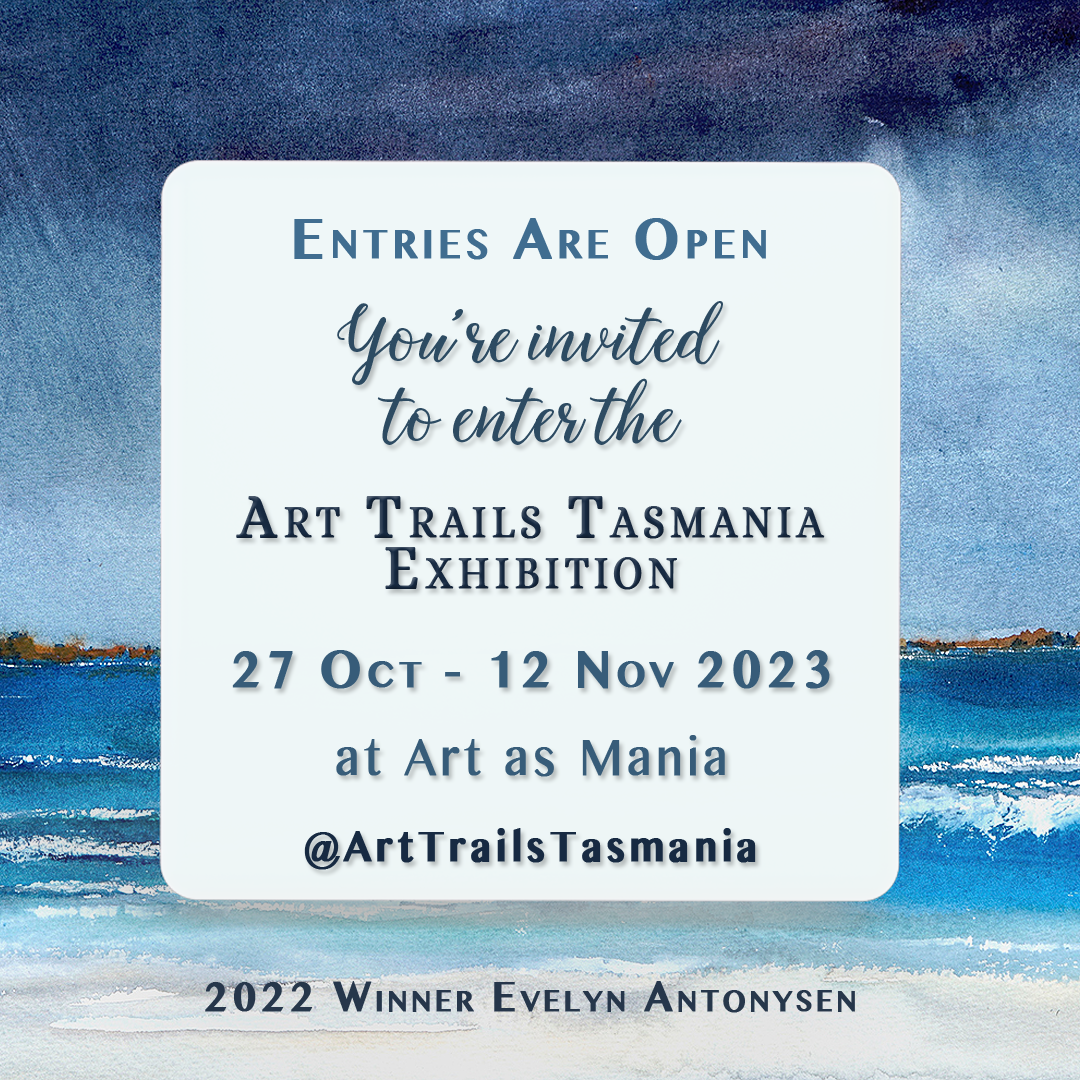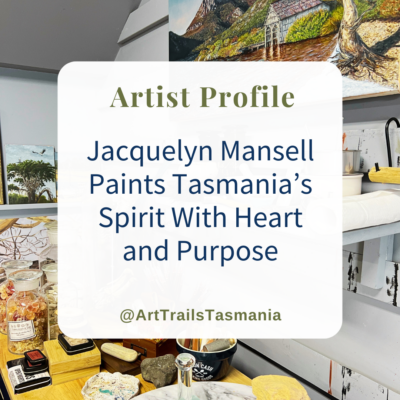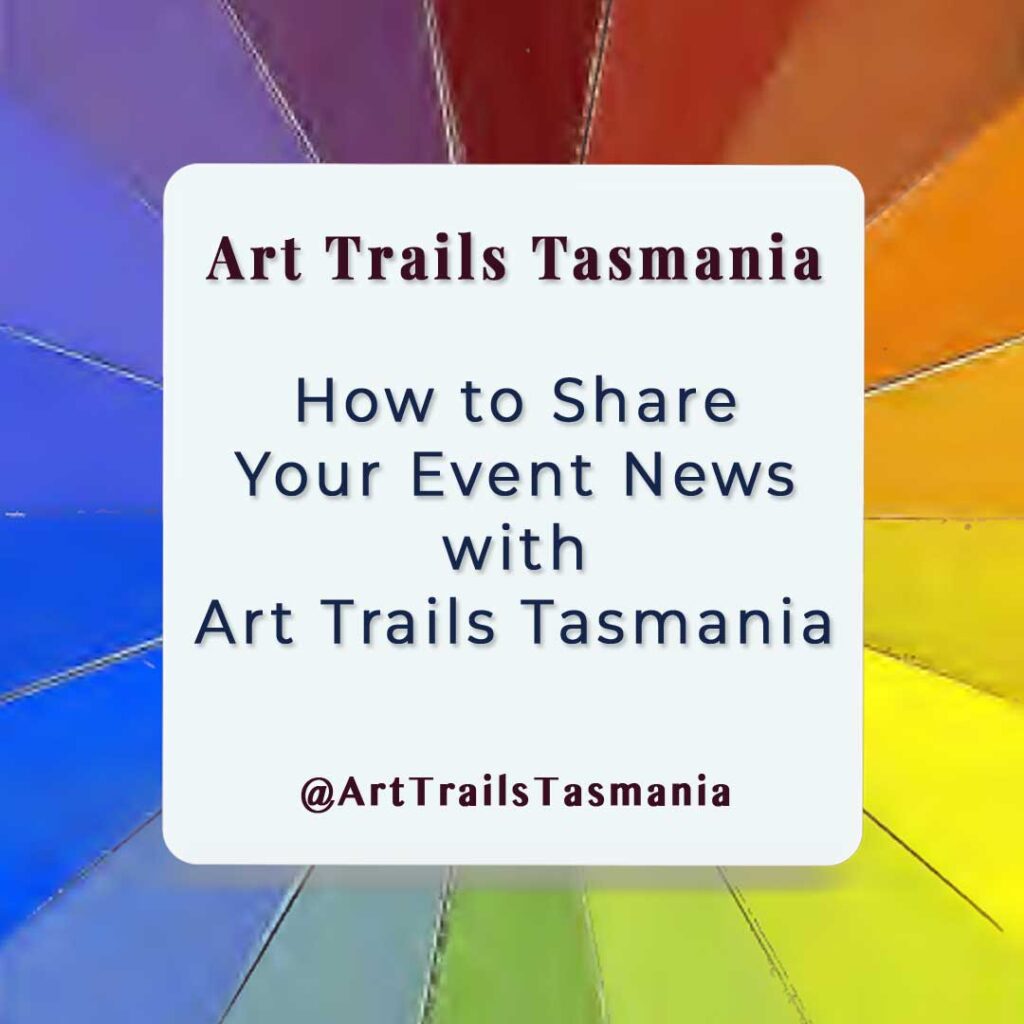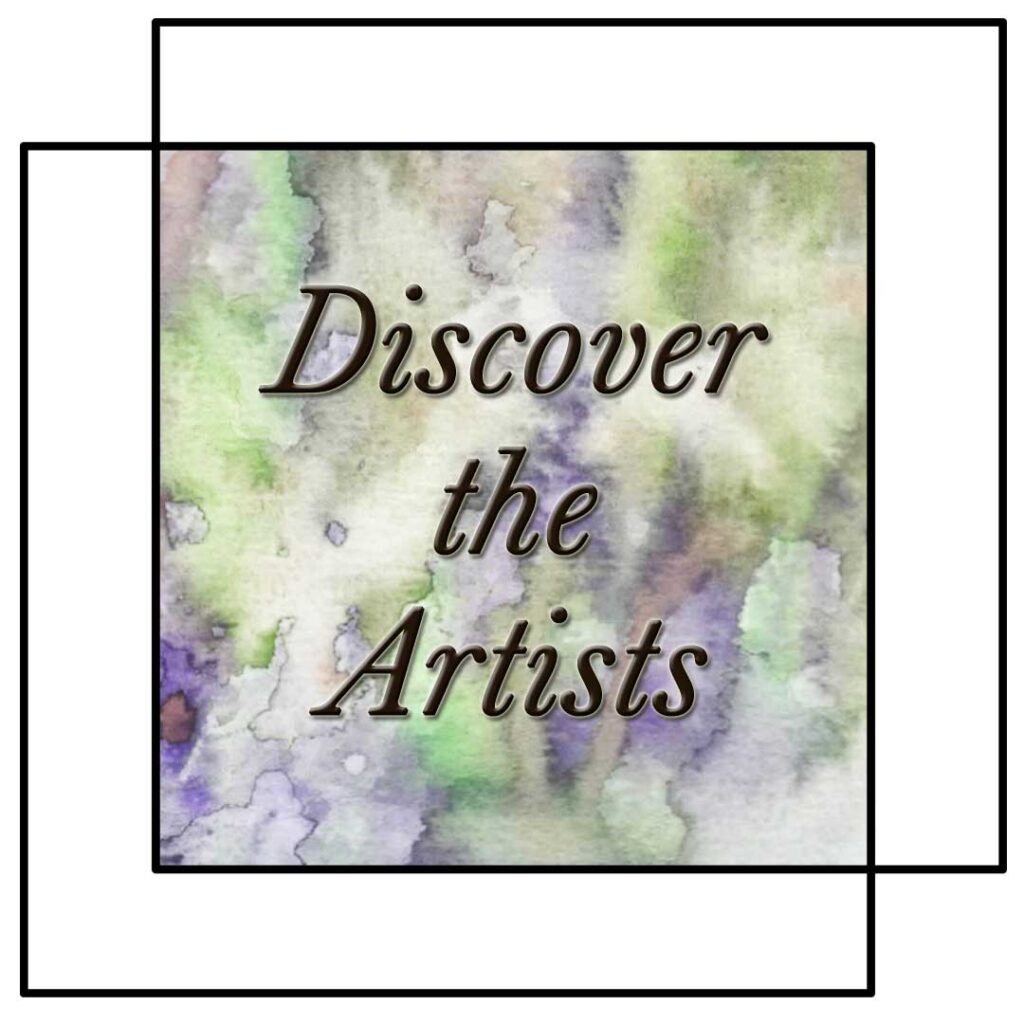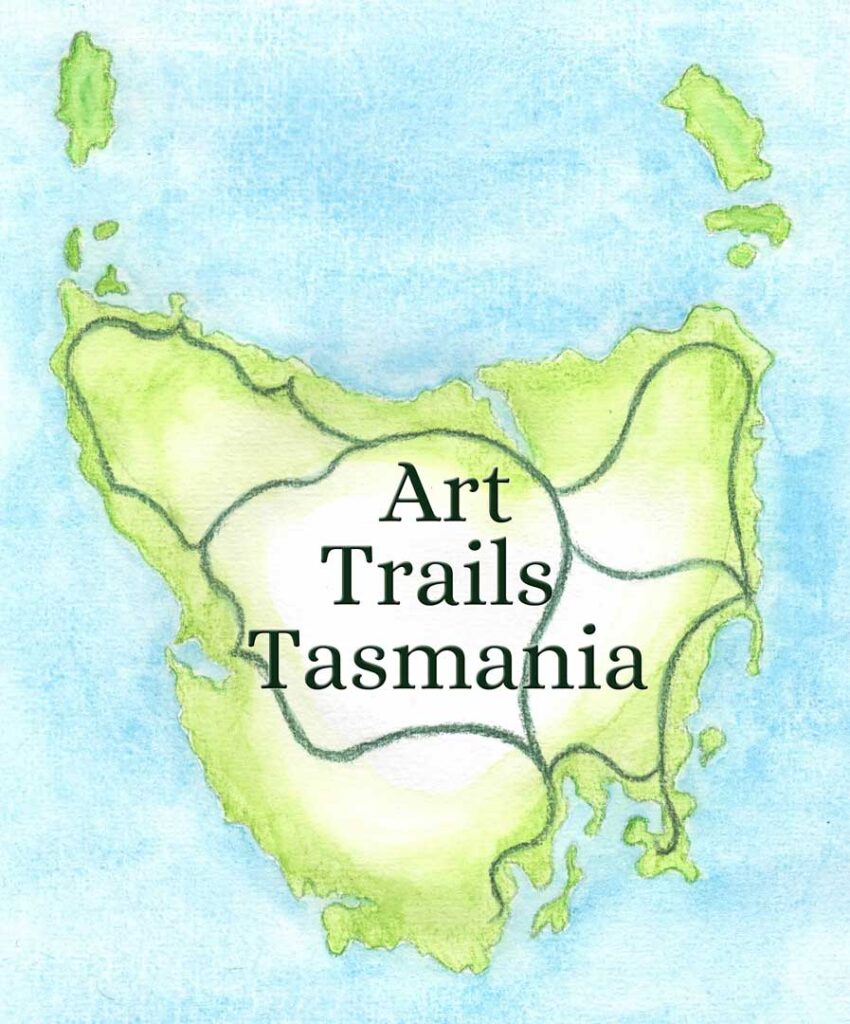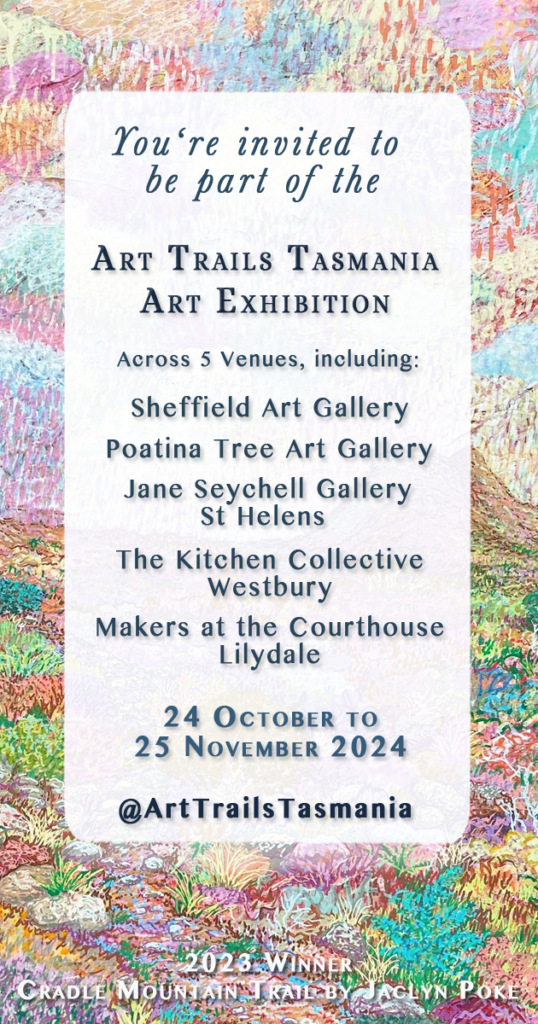Meet Glass Artist Helene Boyer Who Is Constantly Inspired by Tasmanian Nature
My artistic practice is totally grounded in the fact that I am Tasmanian – a proud resident of this heart-shaped island at the bottom of the world whose precious natural beauty always inspires.
My predominant intention is to celebrate the beauty and complexity of the natural world and to raise awareness of its vulnerability to man-made interventions, employing sculpted forms drawn from nature to comment upon contemporary themes.
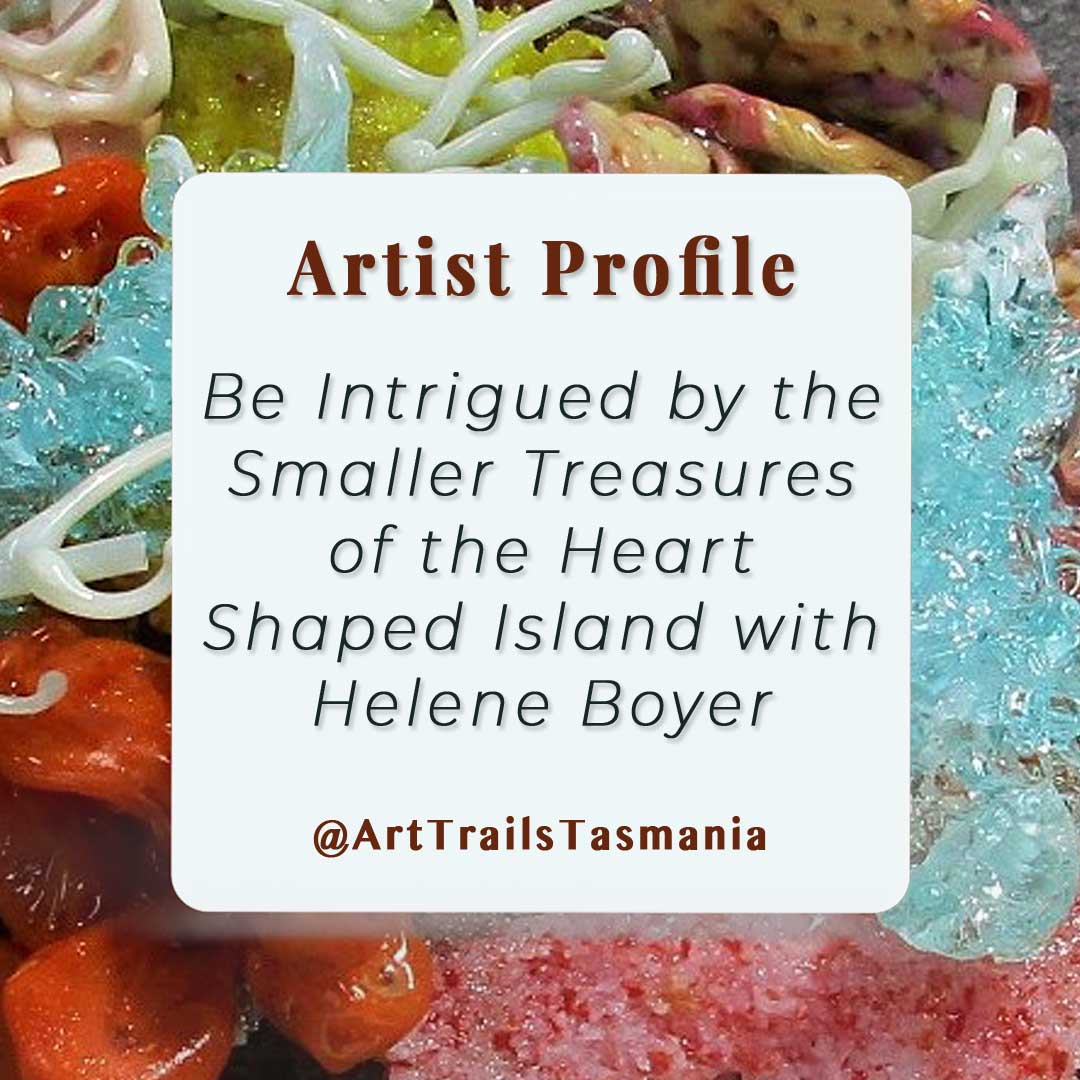
Tasmanian Landscapes Provide the Stimulus
Tasmanian marine and terrestrial landscapes are the usual stimulus for investigation in most of my work.
Valuing the Smaller Things
I am especially drawn to the miraculous diversity to be found in “the smaller things” – past and present sculpture series have focused on nudibranchs, our marine reefs, native plants, fungi, lichen, moss and slimemoulds and orchids.
I cannot go for a walk without noticing the smaller ‘treasures’, constantly taking pics, and my sub conscious stores these experiences away for when I am working in the flame and creating forms.

A Life Centred on The Arts
The Arts have always been predominant in my life. As a child I was always drawing or writing.
I enjoy experiencing and participating in both Performing and Visual Arts and worked as a performer and director in many amateur/semi professional theatre productions, formed Gambit Youth Theatre Co and collaborated with artists in a number of fields.
Trained as an educator majoring in arts participation, I taught and worked in K-12 schools across northern Tassie with both students and staff and developed Yr 11-12 courses in Dance and Creative Arts.
However after becoming a school leader, there was little time for my own arts practice.
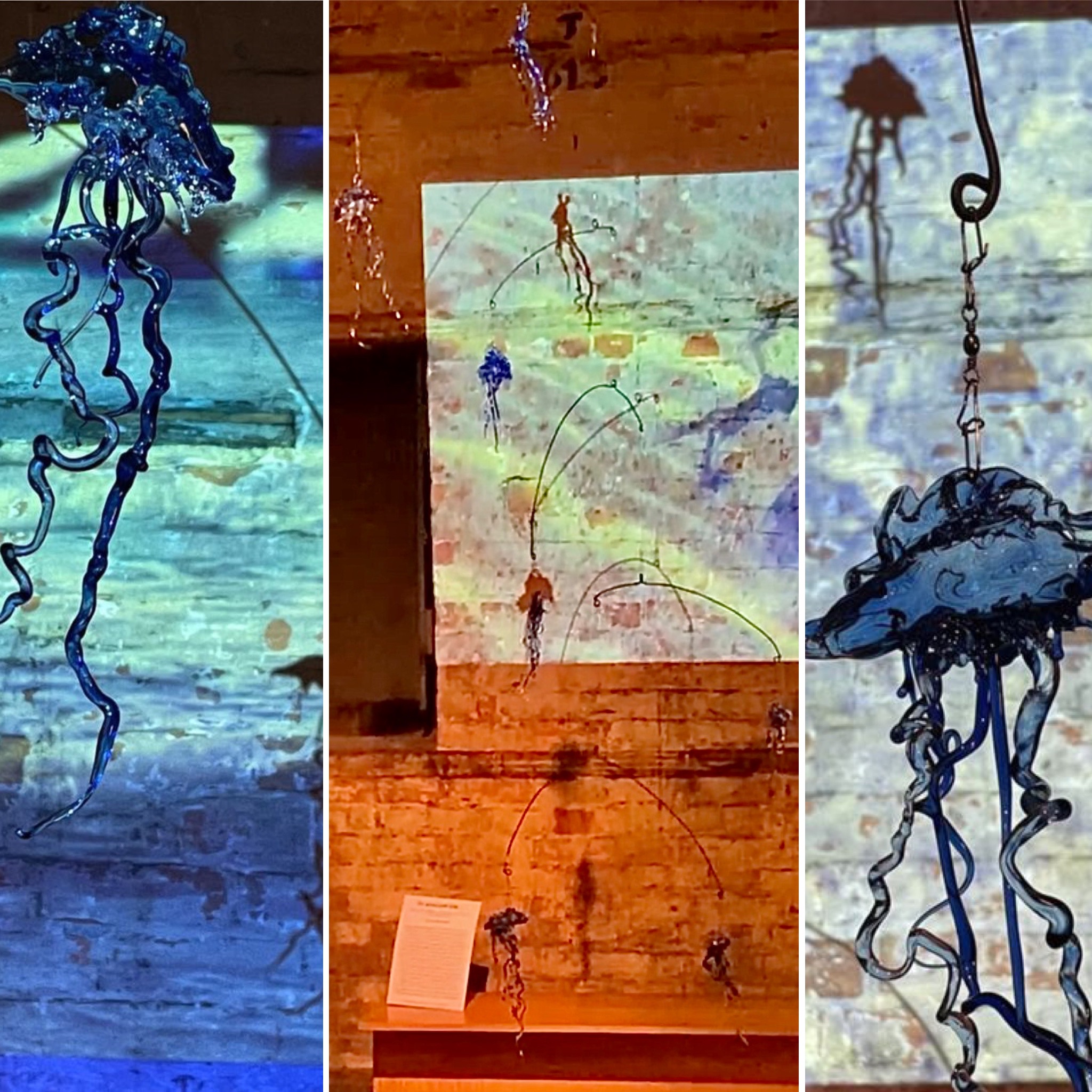
A Love for Glass
I had always loved glass and wanted to explore it so received a small kiln for my 50th and enrolled in a five day bead making course to learn about the material.
As soon as I started melting the glass in the flame I was hooked!
With no training available in Tasmania, I gradually became a self-taught flame-worker and sculptor, assisted by the university of Youtube and experimentation.
Although I was introduced to some techniques through bead making, and continue to create glass jewellery as well as some kiln-fired elements, my chosen medium of expression is 3D sculpture comprised chiefly of flame-worked glass.
A Glass Maker’s Studio in Tasmania
My studio space at the Russell St Studios in Inveresk, Launceston, contains my flame-working bench with torch and tools and stores of glass rod and tubing.
Adjacent to the bench is my small table top sandblaster and compressor.
A table has work in progress, a slow progression of processes, for example, glass forms coloured with glass paints waiting to be fired, sandblasted forms awaiting wax pencils, part-constructed assemblages balanced with foam or tape.
Treasures That Will One day Be Handy
The remainder of the studio space is taken up with storage of glass domes/presentation cases forms, flame-worked glass forms yet to be utilised, lovely objects that inspire and lots of different materials that might one day “come in handy”.
Most sculptors are hoarders to some degree. I have a small glass firing kiln at home which is used for annealing every piece made at the torch and also for fusing kiln-fired elements.
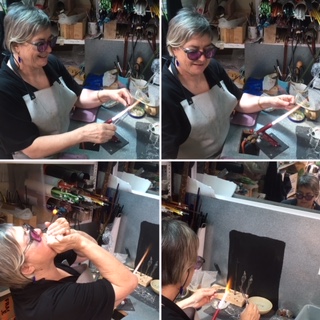
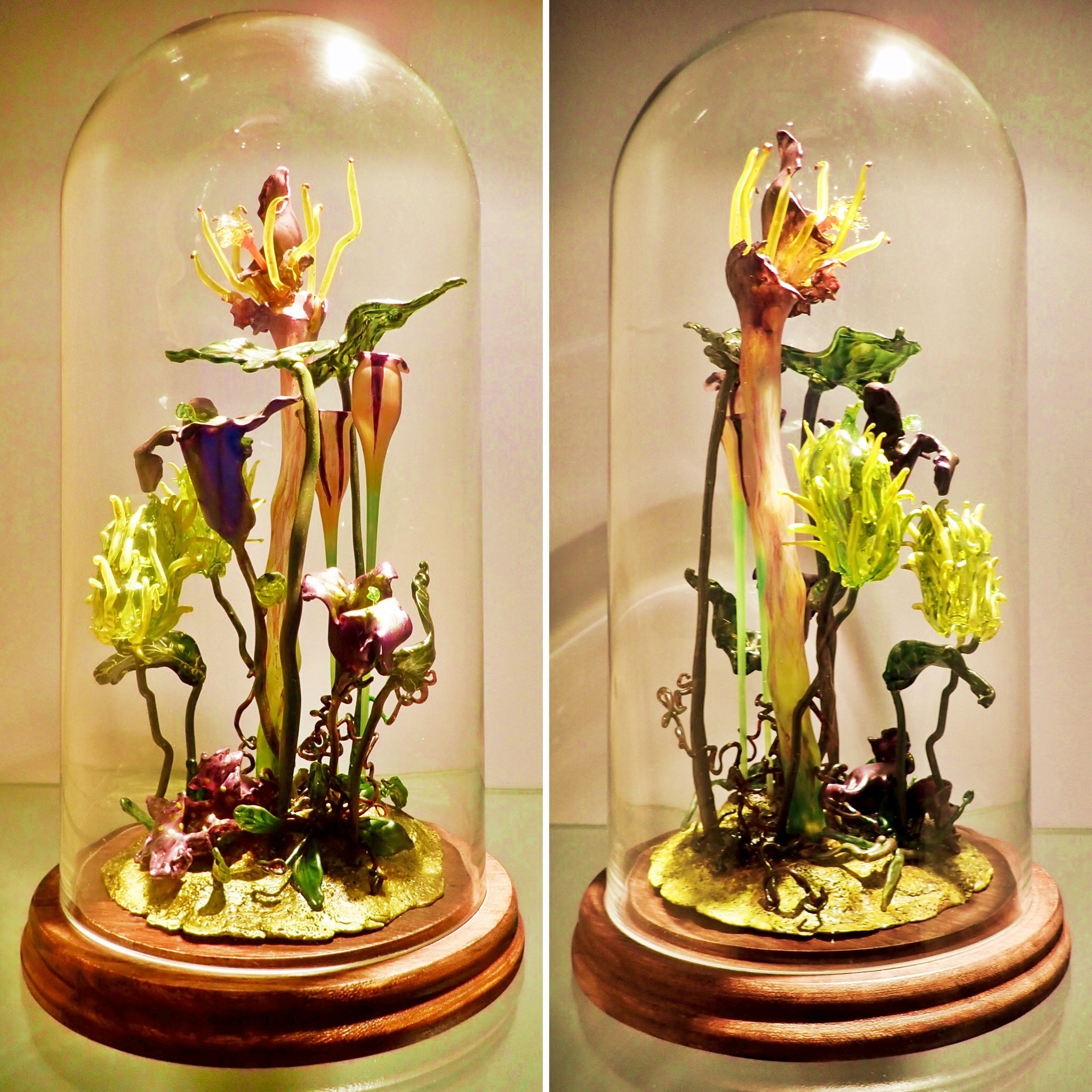
Exploring the Relationship Bewteen the Natural World and the Human Spirit
In my works, unique flame-worked transparent or opaque glass forms, often detailed with painting and mark-making, are assembled to create a landscape/world that explores the relationship between the natural world and the human spirit.
I am also very interested in how I might incorporate a kinetic element or capacity for movement into my sculptures.
The Dangers of Working with Glass
Manipulating fire/heat to shape a melting material in flame at very high temperatures using gravity and breath, is dangerous and requires full concentration but it is also meditative when you are in the zone.
My highly detailed sculptures are deliberately smaller in scale and I love to draw the viewer into the work and to enable them to discover further elements as they traverse it.
Although I carefully research flora, fungi, creatures and habitats, my sculpted glass forms are usually more suggestive than strictly realistic and many also arise from my imagination.
Manipulating Light, Colour and Translucence
My chosen medium of glass means that I am drawn to the expressive potential and manipulation of light, colour and translucence.
Glass is a unique amorphous material –a solid that can be made liquid, shaped, achieve solidity again and then be melted and remade once more.
It also requires the glass artist to be constantly aware of the potential for harm/injury in working with flame and with very high temperatures, processes requiring good ventilation, and also with a material that can break or cut if not handled carefully and safely.
You Need Resilience to Be a Glassie
‘Glassies’ also need to be resilient as they may spend much time on creating a form only to have it crack or shatter in the final moments.
However, there is very little glass wasted in my practice as I am committed to re-using or re-melting any glass elements that break or are not used in a sculpture in future work.
A Love for Soda-lime Glass
I utilise both Soda-lime Glass (soft glass which melts at a lower temperature) and Borosilicate Glass (requires a higher temperature to melt and copes better with changes in temperature, an example brand is Pyrex).
Beginning as rods and tubes of various sizes, these special glasses are able to be sculpted and blown in the flame of a gas-fired or a gas and oxygen mix ‘torch’ before being annealed in a kiln to remove any tension in the glass, thus guarding against breakages.
A favourite of Venetian masters, Soda-lime Glass already comes in many lovely colours. It is often used for bead making and for creating small detailed sculptural forms that can be added to assemblages.
Mixing It Up with Clear Glass
Although colours are available in Borosilicate Glass too, my larger sculptural elements are usually formed in clear glass and then I might add subtle colour or texture to the glass surface through engraving, through sandblasting and wax pencil or through painting and firing with glass paints.
As well as creating sculptures in the flame, I also sometimes add kiln-fired elements to my assemblages, particularly using the pate de verre technique where small grains of glass and glass powders are layered then fused in the kiln.
My glass assemblages may also include painted and textured clay or natural objects that reference the environmental context of the subject matter.
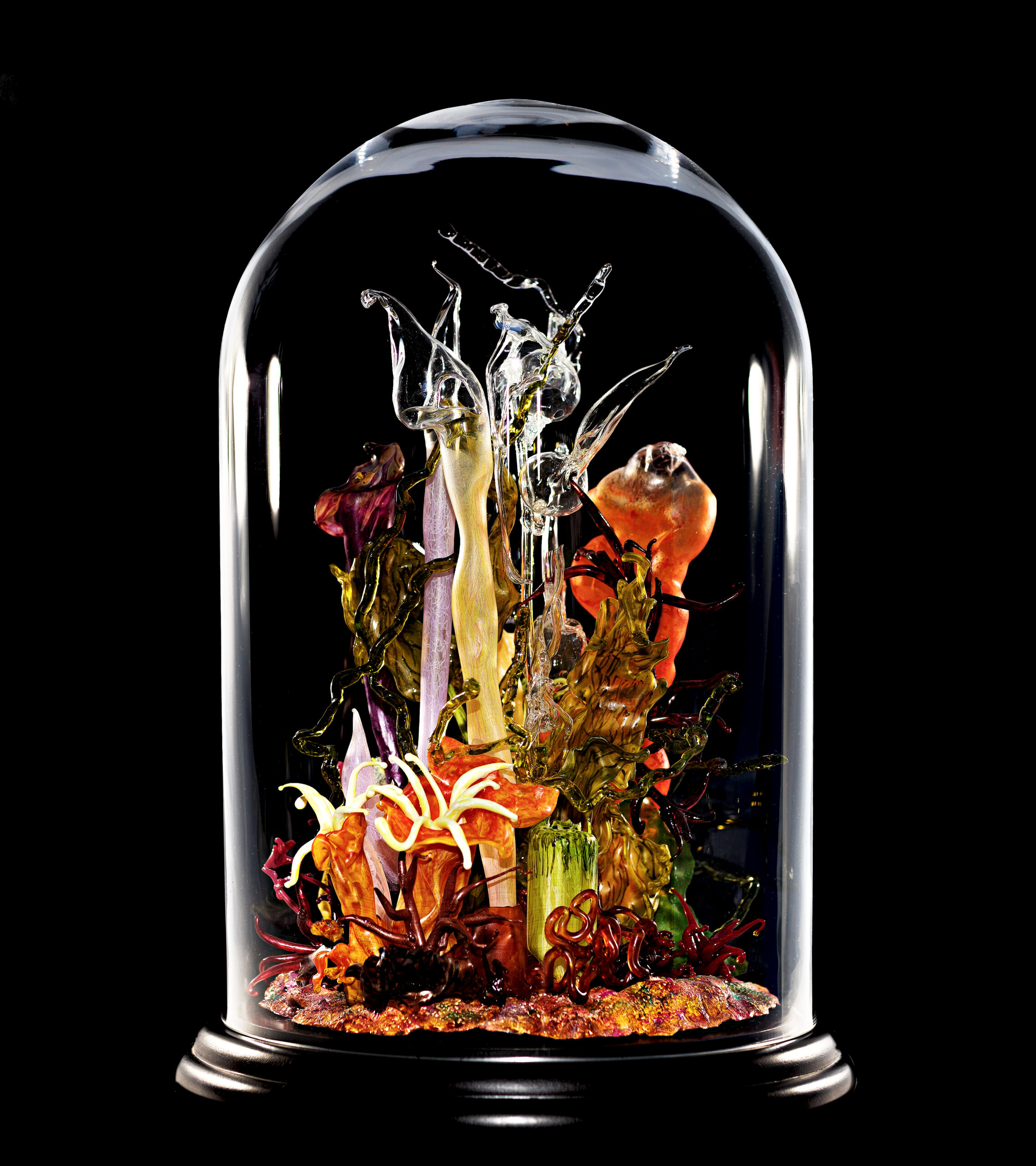
Exploring Botanica Exotica
An ongoing Series for me are the variously sized assemblages of ‘Botanica Exotica’ where tableaux are captured under glass like the scientific specimen displays of the 19th century.
If mankind doesn’t act now on the challenges of climate change, if more of our precious and beautiful botanicals become extinct, they will be seen only as rare specimens in scientific collections.
Glass Scultpural Growth
These sculptures have become larger and more detailed as I have developed my technique and particularly since I have acquired a torch able to heat thicker borosilicate glass.
I am now also including kinetic elements in my work and last year I created my first ‘mobile’ hanging sculpture which is comprised of seven ‘floating’ Bluebottle organisms; a work that hangs from the ceiling.
Growing as An Exhibiting Artist
That it is important to be well-organised with regard to meeting deadlines and planning out how many weeks it might take to undertake all of the processes required to complete a sculpture in time for an exhibition.
If you are entering a prize/award then you must also ensure that you have the work completed in enough time to have high quality photographs taken ahead of the submission deadline.
Enable Exhibition Curators to Promoting Your Work
Exhibition curators also usually require text and photos well ahead of the exhibition dates for catalogue and promotion purposes.
A more fragile sculpture material like mine requires very specific protective packaging and I always include helpful labelling and info to assist those who are unpacking/packing up the work.
Lighting is Key
Check that the gallery venue is suited to showing your work in a quality way. Compared to artists producing 2D or wall-based work, a 3D artist might become frustrated with the lack of essential lighting and suitable display areas/plinths provided in many gallery spaces and sometimes the gallery will refuse to allow the work to be hung anywhere but on a wall.
You may need to contact the exhibition curator/organiser to explain what your work will need to be experienced at its best.
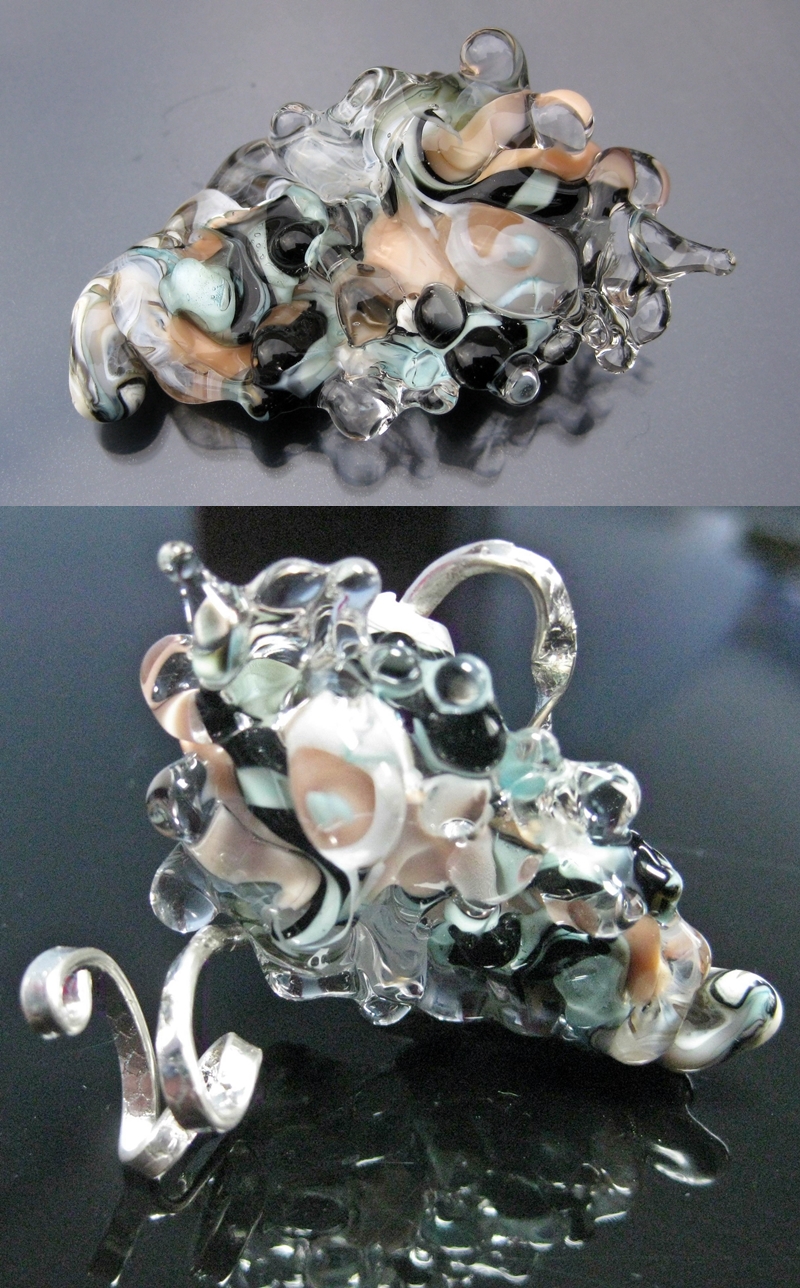
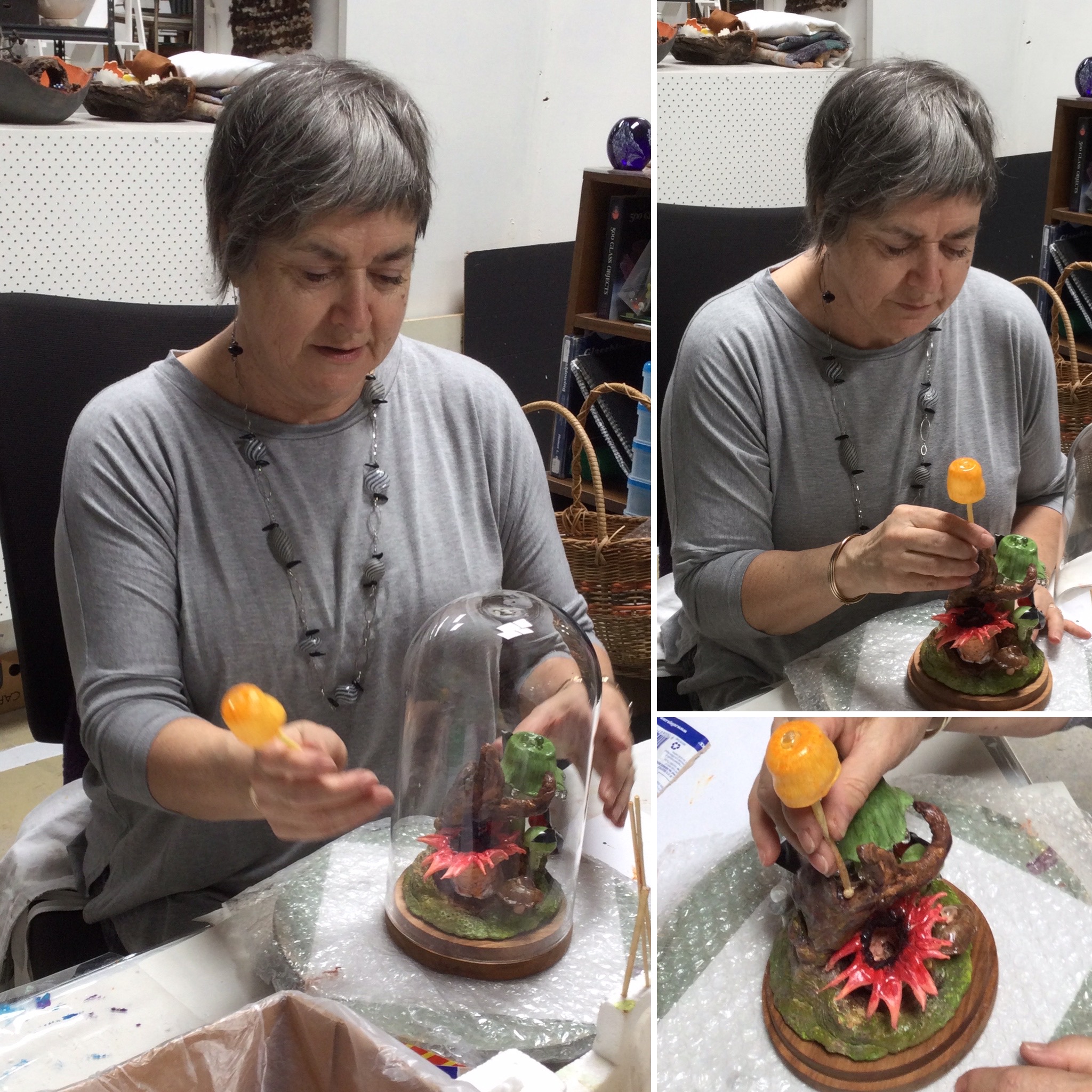
Allow Yourself to Grow
Be open to challenging yourself, to learning from others, to experimenting with new ways as well as practising techniques.
Ask friends/colleagues whose aesthetic advice you value to give you helpful feedback.
Stay true to what makes you enjoy making art and don’t listen too much to your inner critic that prevents you from having a go, fearing failure.
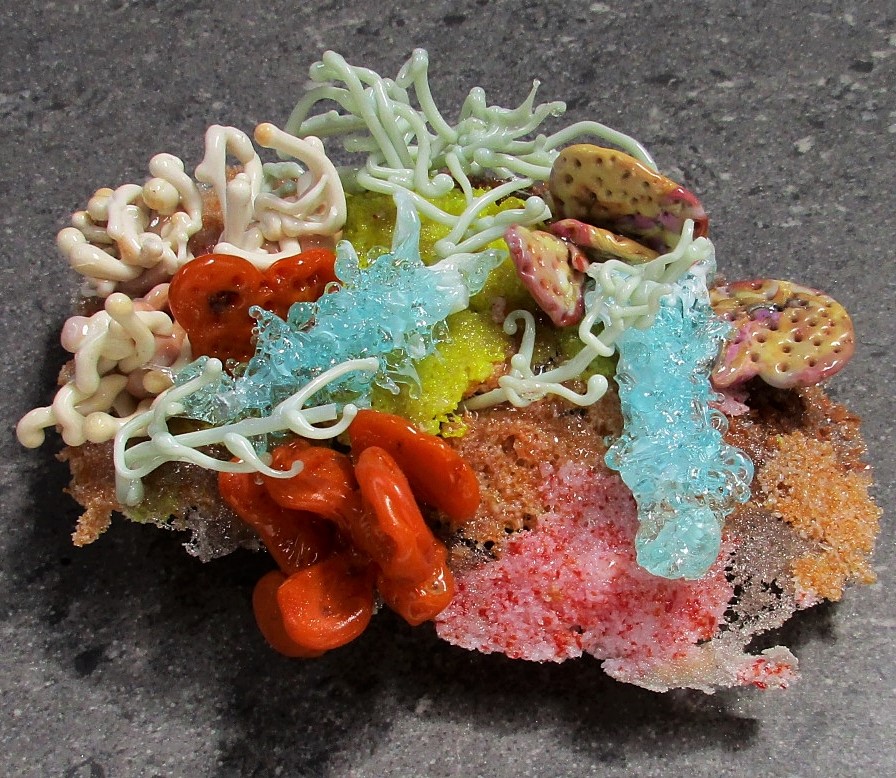
Finding Helene Boyer at Glass Artist Exhibitions
In the past five years, I have been exhibited in state, national and international galleries and my work acquired by local, national and international collectors.
A large domed work was chosen for the 2019 Tom Bass figurative sculpture prize exhibition in Sydney, my sculpture and jewellery has been regularly exhibited at the Nolan Gallery in Hobart, I had my first solo exhibition at the Cradle Mountain Wilderness Gallery in 2020 celebrating Tasmanian fungi and slimemoulds and a sculpture from the Exotica Botanica Series was chosen for the Henry Jones Art Prize exhibition 2021.
In 2021-22, I was the only Australian artist to be included in the prestigious “Glass Lifeforms ” exhibition at Fuller Craft Museum in Massachusetts USA.
This international event celebrates the best biological glass work made in the spirit of the famous 19th and 20th century models of invertebrates and plants made by the father and son team, Rudolf and Leopold Blaschka, for the Harvard University’s Botanical Museum.
Two of my sculptures were recently exhibited in a Sawtooth Ari-curated vitrine at the UTAS Library at Inveresk and later this year I am included in the exhibition, ‘Strange Nature’ at QVMAG Launceston.
As an artist whose creative outcomes are time and process intensive, I have chosen not to be represented by a gallery or to focus on another solo exhibition at this point but I take on a limited number of commissions and am enjoying the freedom to create when inspired and to explore new processes.
About the Artist
Based in Launceston Tasmania, I am a glass artist and sculptor who utilises forms drawn from nature to comment upon contemporary themes.
I am inspired by the complex vigour and fecundity of the diverse and extraordinary botanical forms to be found in the marine and terrestrial environments of my island home to create delicate and colourful works that usually celebrate ‘the smaller things’ in nature.
I love the potential of glass to exploit transparency, colour and light and to simultaneously be fragile and robust.
Soda lime and borosilicate glass rods and tubes are manipulated in the flame of my torch and then additional colour or texture is added to the glass surface through sandblasting, painting or pencil before sculptural components are assembled to form a tableau or ‘small world’.
I often capture the botanical sculptures under glass like the scientific specimen displays of the 19th century, sometimes creating quasi scientific names for imagined forms.
I publish examples of sources of inspiration, studio processes, works in progress and completed works on my Instagram page and which will soon have a linked online shop. I also accept a limited numbers of commissions.
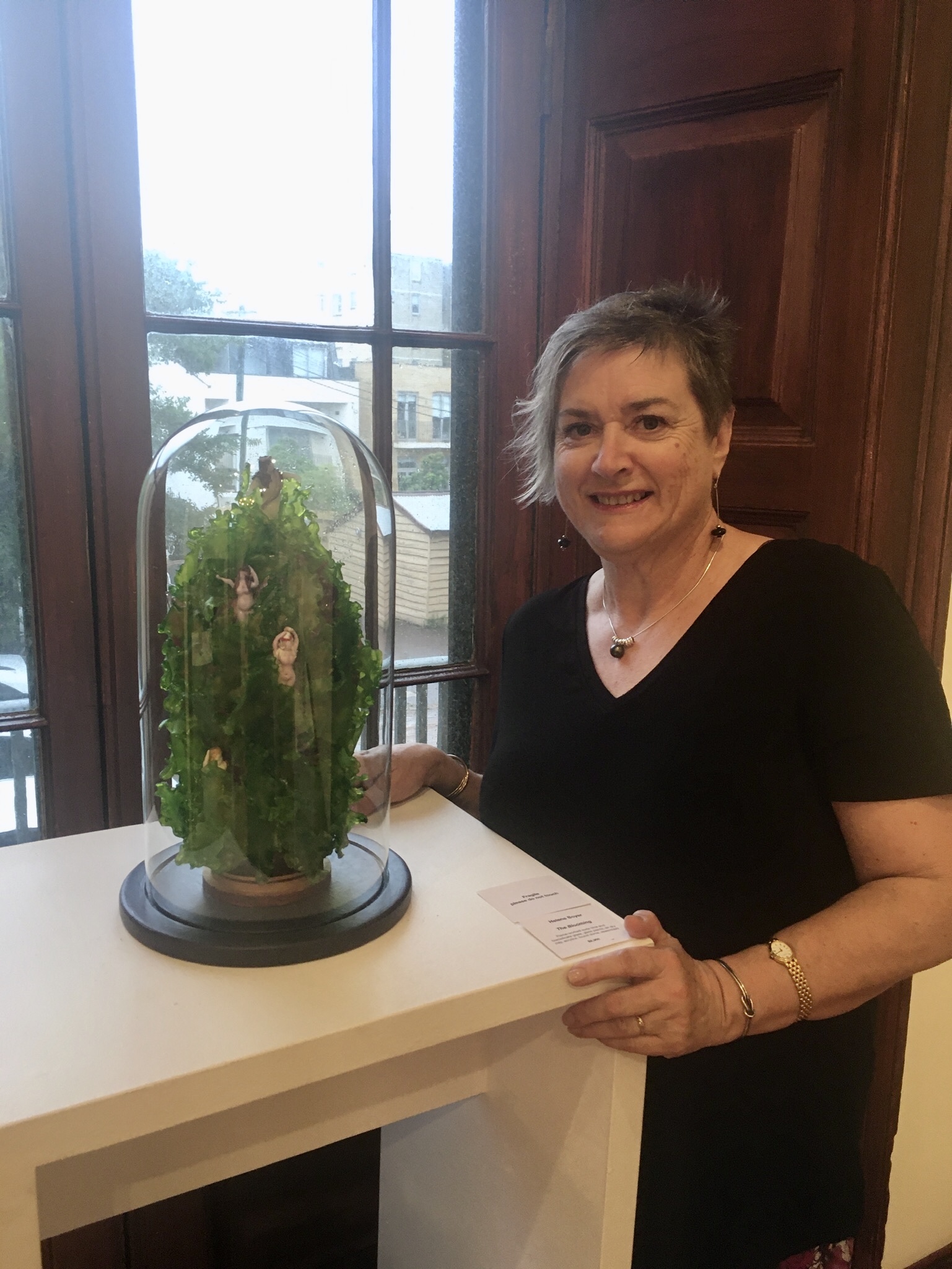
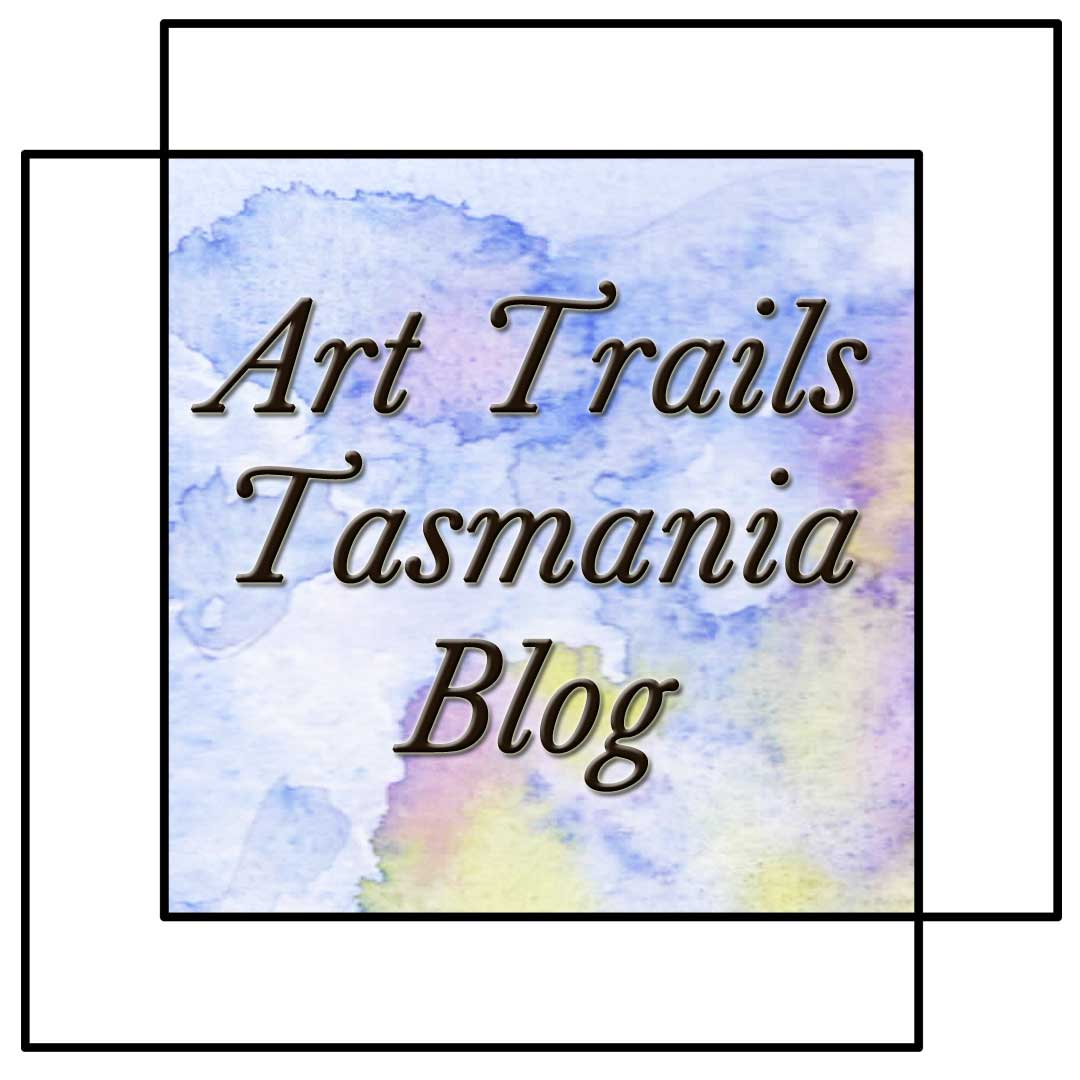
Artist Profile Stories
I want there to be more arts and crafts in our world, in our communities and in our own lives. Hopefully you’ve found this blog post inspiring and interesting.
So I’m creating, with your help, Art Trails Tasmania, allowing all of us who feel this love to create more of it.
And the Art Trails Tasmania blog is a key part of making this happen, telling the stories of members. It’s about what they have happening with workshops and classes, exhibitions, open studio trails, where to find their outlets, markets, fairs and festivals so you can shop their creations as well as their art and craft retreats.
Also being shared are the supporters of our artists, the galleries, shops, cafes, art societies and groups, places to stay and artist in residencies.
Jacquelyn Mansell Paints Tasmania’s Spirit With Heart and Purpose
Meet Tasmanian Artist Jacquelyn Mansell The greatest joy in my art comes from the profound connection between myself, the subject, and the viewer. Immersing myself in the landscapes and wildlife of Lutruwita (Tasmania) allows me to translate the island's raw beauty...
Bold Colours and Mark-Making with Julie McDonald
An Art Practice Centred on Sharing Connections My art practice is more than just a profession; it’s my way of sharing stories and connecting with the world around me. I thrive on experimenting with bold colours and mark-making, constantly challenging myself to step...
An Abiding Love for Colour and Making with Noelene Hammond
Mixing Colour, Brightness & Abundance My love of colour started when I began selling in art galleries. Black, white and grey do not work. I try to create a picture in my head. My boxes of coloured wool I could not be without, as they give me great joy. My...

